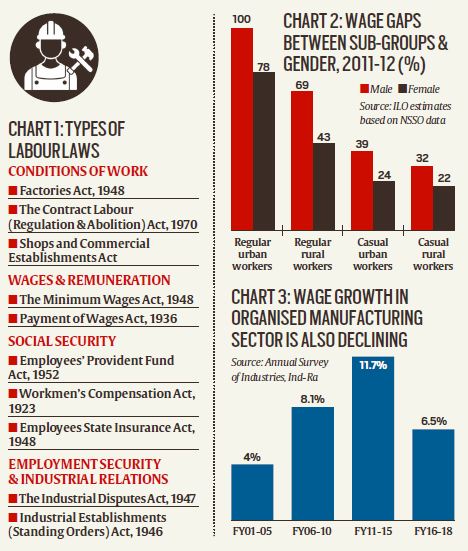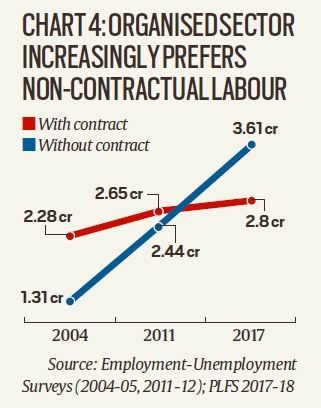Contents
- The trends shaping the post-COVID-19 world
- Responding to COVID-19 at the grassroots
- The face of Exploitation: Workers’ Rights and Dignity
- What labour law changes mean?
THE TRENDS SHAPING THE POST COVID-19 WORLD
Focus: GS-II International Relations
Asia ascending, U.S. waning
- The first trend which became clear in the aftermath of the 2008 global financial crisis is the rise of Asia.
- The 2008 financial crisis showed the resilience of the Asian economies, and even today, economic forecasts indicate that out of the G-20 countries, only China and India are likely to register economic growth during 2020.
- Asian countries have also demonstrated greater agility in tackling the pandemic compared to the United States and Europe.
- Asian states have shown greater responsiveness and more effective state capacity.
- Consequently, Asian economies will recover faster than those in the West.
- The second trend is the retreat of the U.S. after a century of being in the forefront of shaping the global order.
- Even as countries were losing trust in the U.S.’s leadership, its bungled response at home to the pandemic indicates that countries are also losing trust in the U.S.’s competence.
Intra-European fission
- A third trend is the European Union’s continuing preoccupation with internal challenges generated by its expansion of membership to include East European states, impact of the financial crisis among the Eurozone members, and ongoing Brexit negotiations.
- Threat perceptions vary between old Europe and new Europe making it increasingly difficult to reach agreement on political matters e:g relations with Russia and China.
- Further damage was done when Italy was denied medical equipment by its EU neighbours who introduced export controls, which led to China airlifting medical teams and critical supplies.
Rising China
- A fourth trend, related to the first, is the emergence of a stronger and more assertive China.
- In recent years, the U.S.-China relationship moved from cooperation to competition; and now with trade and technology wars, it is moving steadily to confrontation.
Fading organisations
- The World Health Organisation (WHO) was the natural candidate to lead global efforts against the health crisis but it has become a victim of politics.
- The UN Security Council (UNSC), the G-7 and the G-20 are paralysed at when the world faces the worst recession since 1929.
- The reality is that these institutions were always subjected to big power politics.
- During the Cold War, U.S.-Soviet rivalry blocked the UNSC on many sensitive issues and now with major power rivalry returning, finds itself paralysed again.
- U.S. leadership strengthened the Bretton Woods institutions in recent decades because the U.S.’s voting power gives it a blocking veto.
The energy factor
- Growing interest in renewables and green technologies on account of climate change concerns, and the U.S. emerging as a major energy producer were fundamentally altering the energy markets.
- Now, a looming economic recession and depressed oil prices will exacerbate internal tensions in West Asian countries which are solely dependent on oil revenues.
-Source: The Hindu
RESPONDING TO COVID-19 AT THE GRASSROOTS
Focus: GS-III Disaster Management
Introduction Line
Mahatma Gandhi envisioned that a free India would rest on a foundation of gram panchayats, village republics that governed locally and epitomised Swaraj in practice.
Locally relevant initiatives and issues
- The 73rd Constitutional Amendment mandates the constitution of panchayats at the district, intermediate and village levels as devolved institutions of self-government and provides for the endowment of powers and responsibilities to plan and implement programmes for social justice and economic development.
- In many states, the substantive spirit of the constitutional design has been obstructed by politicians and bureaucrats, who fear the loss of their patronage powers.
- Panchayats are not given enough funds and are bypassed by State-controlled line departments that continue to implement programmes falling within the rightful domain of the former.
Kerala’s Success and Panchayati Relevance
- Nearly a third of Kerala’s plan funds have been given to the panchayats as flexible development and maintenance funds, a policy that the government follows even though it suffers from chronic fiscal stress.
- The Kudumbashree system, which encourages women to form self-help groups and their federations, acts as an organised civil society counterpoint to the panchayats, collaborating with and yet holding to account the latter for their performance.
- Kerala’s panchayats were COVID-19-ready because years ago, they stepped in as caregivers for the old, the weak and the marginalised.
- Governance abhors vacuums, and that prompts the revival of democratic decentralisation.
The five-year terms of the panchayats will come to an end and an election is impossible in the current circumstances.
Whether the governments appoint officials or their chosen political representatives to take charge or continue with the current elected bodies functioning as administrators will determine where the government stands on its commitment to democratic decentralisation.
-Source: The Hindu
THE FACE OF EXPLOITATION: WORKERS’ RIGHTS AND DIGNITY
Focus: GS-II Social Justice
Why in news?
- As thousands of migrant workers walk across India in a desperate attempt to reunite with their families, States are competing with one another to provide greater relaxation of labour laws to appear ‘industry friendly’.
- U.P. Government has cleared an ordinance exempting businesses and industries from labour laws, except for a handful, for three years.
- The Centre has done the same through its many circulars and clarifications issued during the lockdown.
What has happened so far with respect to Migrants?
- The sudden announcement of the nationwide lockdown on March 23 left an estimated 13 crore migrants with no way to return home and no money.
- When the lockdown was relaxed from April 20, the Standard Operating Procedure issued permitted asymptomatic workers to return to their worksites where they were to reside.
Actions that seem to prevent workers from Returning
- The April 29 order permitting inter-State movement of migrant workers – permitted only “stranded workers” to leave, with the Centre clarifying that workers “otherwise residing normally at places, other than their native places for purposes of work” are not “stranded”.
- Another circular that the workers would have to pay for their train tickets.
Violating rights
- Article 23 of the Constitution prohibits “forced labour”.
- The Supreme Court, in PUDR v. Union of India (1982), held that “the word ‘force’ must be construed to include- the force arising from the compulsion of economic circumstances which leaves no choice of alternatives to a person in want and compels him to provide labour or service even though the remuneration received for it is less than the minimum wage.”
- It would also run afoul of the International Labour Organization’s ‘Employment and Decent Work for Peace and Resilience Recommendation, 2017’ which requires states to ensure marginalised groups “freely choose employment” while rebuilding after any disaster.
- Thus, the various Home Ministry directives and State ordinances would be violative not only of India’s own Constitution but also its international commitments.
-Source: The Hindu
WHAT LABOUR LAW CHANGES MEAN?
Focus: GS-II Social Justice
What are Indian labour laws?
In India there are over 200 state laws and close to 50 central laws, yet there is no set definition of “labour laws” in the country.
Broadly speaking, they can be divided into four categories –


- Factories Act are to ensure safety measures on factory premises, and promote health and welfare of workers.
- The Shops and Commercial Establishments Act, on the other hand, aims to regulate hours of work, payment, overtime, weekly day off with pay, other holidays with pay, annual leave, employment of children and young persons, and employment of women.
- The Minimum Wages Act covers more workers than any other labour legislation.
- The most contentious labour law, however, is the Industrial Disputes Act, 1947 as it relates to terms of service such as layoff, retrenchment, and closure of industrial enterprises and strikes and lockouts.
Why are labour laws often criticized?
- Indian labour laws are often characterised as “inflexible”.
- Even the organised sector is increasingly employing workers without formal contracts.
- This some people argue, has constrained the growth of firms on the one hand and provided a raw deal to workers on the other.
- It can also be argued that there are too many laws, often unnecessarily complicated, and not effectively implemented.
- Moreover, there was always a wide gap between formal and informal wage rates.
Changes to boost employment and spur economic growth
- Theoretically, it is possible to generate more employment in a market with fewer labour regulations.
- However, as the experience of states that have relaxed labour laws in the past suggests, dismantling worker protection laws have failed to attract investments and increase employment, while not causing any increase in worker exploitation or deterioration of working conditions.
- There is already too much unused capacity. Firms are shaving off salaries up to 40% and making job cuts.
- Instead of creating exploitative conditions for the workers, the government should have partnered with the industry and allocated 3% or 5% of the GDP towards sharing the wage burden and ensuring the health of the labourers.
-Source: Indian Express





